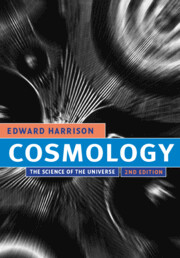Introduction
Published online by Cambridge University Press: 05 June 2012
Summary
With equal passion I have sought knowledge. I have wished to understand the hearts of men, I have wished to know why the stars shine. And I have tried to apprehend the Pythagorean power by which number holds sway above the flux. A little of this, but not much, I have achieved.
Bertrand Russell (1872–1970), Autobiography, ProloguePROLOGUE
Cosmology, the science of the universe, attracts and fascinates us all. In one sense, it is the science of the large-scale structure of the universe: of the realm of extragalactic nebulae, of distant and receding horizons, and of the dynamic curvature of cosmic space and time. In another sense, it seeks to assemble all knowledge into a unifying cosmic picture. Most sciences tear things apart into smaller and smaller constituents in order to examine the world in ever greater detail, whereas cosmology is the one science that puts the pieces together into a “mighty frame.” In yet another sense, it is the history of mankind's search for understanding of the universe, a quest that began long ago at the dawn of the human race. We cannot study cosmology in the broadest sense without heeding the many cosmic pictures of the past that have shaped human history. We trace the rise of the scientific method and how it has increased our understanding of the physical universe. Which brings us to the major aim of this book: gaining an elementary understanding of the physical universe of modern times.
- Type
- Chapter
- Information
- CosmologyThe Science of the Universe, pp. 1 - 10Publisher: Cambridge University PressPrint publication year: 2000
- 1
- Cited by

